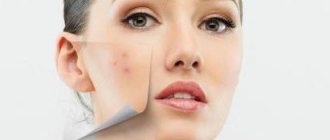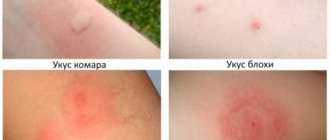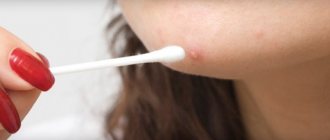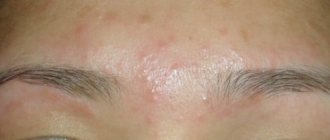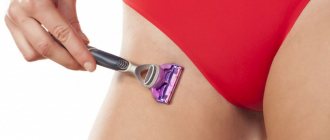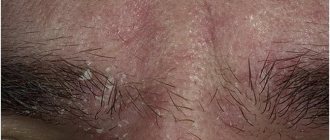Why does peeling occur?
Peeling usually occurs when an excess layer of dead epithelial cells or excessive growth of the stratum corneum forms on the surface of the skin.
This symptom indicates a violation of the natural processes of keratinization and rejection. The plates formed in this case can have different shapes, thickness, area and density of attachment to the underlying layers. Peeling most often occurs after damage to the superficial or deep layers of the dermis. In this case, aggressive chemicals, excessive insolation, unfavorable meteorological conditions, various microorganisms and antibodies to one’s own skin cells can act as the main etiological factor.
Peeling is also said to occur when flaking superficial crusts appear on the skin. Most often, they are formed after the drying of lymph and ichor, which are released from cracks or bursting blisters in some dermatological diseases.
The main causes of peeling skin:
- irrational use of degreasing cosmetics;
- the use of unsuitable skin type or low-quality creams, lotions and masks, which is especially critical during periods of hormonal changes in the body;
- abuse of local alcohol-based products, which often happens in a teenager who has acne and peeling skin on the face;
- an allergic reaction in response to the intake of an allergen from food or its direct contact with the skin;
- a period of active skin restoration after aggressive cosmetic procedures, most often peeling appears after facial cleansing and dermabrasion;
- neglect of protective equipment when working outdoors in unfavorable weather conditions, when tanning under the sun or in a solarium;
- frequent washing with alkalizing soap without subsequent moisturizing of the skin;
- hypovitaminosis A, E, B, lack of zinc, selenium and a number of other microelements;
- various dermatological diseases of infectious and non-infectious etiology.
In some cases, due to improper care and hypovitaminosis, peeling is maintained against the background of inadequate self-medication. After all, people suffering from dermatological problems usually ask what to put on their face, first from their friends and pharmacists. Using a variety of masks, creams and even corticosteroid ointment, they often worsen their condition. Therefore, treatment for peeling facial skin should be prescribed by a specialist after establishing the true cause of this problem.
Ways to eliminate peeling in the chin area
If the chin is peeling, you can perform cosmetic procedures: biorevitalization, mesotherapy or fruit peeling
When the skin begins to peel off, it looks quite unsightly.
This phenomenon rarely goes away on its own, so you need to seek help from a cosmetologist.
Today, in the arsenal of beauty salons there are procedures that will help those who have flaky skin on the chin.
1. Peeling with fruit acids - gentle polishing of the skin is carried out using an individually selected complex of acids. 2. Mesotherapy - injections of hyaluronic acid are introduced into the upper layers of the skin of the chin, which can eliminate peeling. 3. Biorevitalization - drugs containing the necessary complex of biologically active substances to smooth it.
Any procedure is selected only after a complete examination of the skin by a qualified dermatologist.
Drug treatment for peeling
"Bepanten" is a very effective drug in the presence of peeling, suitable for use on dry, irritated and sensitive facial skin.
A good remedy to help with flaky skin is a cream with hydrocortisone (substance content no more than 0.5%). The cream is applied to the chin once a day, the procedure lasts 1-2 weeks.
If the peeling on the chin is severe and cannot be eliminated with moisturizers, you can use medications containing dexapanthenol. This application is very effective in the presence of facial skin diseases associated with a decrease in the protective and regenerative abilities of the skin.
For example, when using Panthenol, which is recommended for burns, it is better to choose the drug in the form of a spray. You need to spray it on the chin area 3-4 times a day. 10 minutes after application, remove the residue with a napkin. Panthenol cream will also have a positive effect if the chin is peeling.
A fairly effective drug for peeling is Bepanten cream. Suitable for use on dry, irritated and sensitive facial skin. You can treat your face in the winter season to prevent peeling.
Traditional medicine recipes against peeling
Oatmeal scrub is an excellent remedy for removing peeling on the chin
If peeling is caused by external factors, then time-tested recipes from traditional medicine will help improve the condition.
First, you should cleanse the skin of the stratum corneum to get the maximum effect from the procedure. Cleansing occurs using a scrub. You should not use scrubs containing abrasive substances, because... this will only worsen the situation and injure the skin. It would be ideal to use gommages and scrubs made independently at home. How to use the scrub correctly, read the article,
Oatmeal scrub 2 tbsp. Pour boiling water over the flakes and leave for 20 minutes, then add the white of 1 egg to the resulting mass, mix well. Apply the resulting composition to the face with massage movements, leave for 5-10 minutes and rinse with warm water.
Berry scrub Grind a handful of blackberries in a mortar, spread the mixture over the face with massage movements for several minutes, then wash with water.
Also, for facial peeling at home, you can use coffee grounds, pieces of apple, cucumber or watermelon, which should be used to wipe your face strictly along the massage lines. A piece of bread soaked in milk is also suitable as a cleansing agent. The resulting paste should be applied to the face for 20 minutes, then rinsed off with cold water.
To remove flaky, dead cells, you can perform the following procedure: mix honey in water and massage the previously cleansed facial skin, wetting your fingers in the resulting composition during the procedure. Then the face should be rinsed with warm water, blotted and applied with a cream suitable for your skin type.
Remember that if the skin on your chin is peeling, you need to take more careful care of the skin.
What are red spots on the face
It is impossible to unequivocally answer the question of what helps with peeling on the face. Treatment options will depend on the underlying cause, the presence of other symptoms, and the severity of skin changes. This requires a comprehensive examination, including laboratory and instrumental diagnostics. Therefore, the best solution would be to consult a doctor.
If peeling is caused by care errors, incorrect selection of cosmetics or cosmetic procedures, the help of a competent cosmetologist will be enough. A specialist will help you choose the right cream and recommend the appropriate method for daily skin cleansing. Sometimes folk remedies are effective: various masks and washes with herbal decoctions. But they can be used only after agreement with a cosmetologist and allergies have been ruled out.
An anti-flaking face mask is usually used to moisturize and nourish the skin and reduce irritation. It may include oatmeal, honey, flaxseed or olive oil, egg yolk, vegetable purees and juices.
Since it is not always possible to remove a cosmetic problem at home, a cosmetologist may recommend salon procedures. At the same time, according to indications, gentle hardware cleansing of the skin, biorevitalization and mesotherapy sessions, intensive courses using mud applications, pharmaceutical and alginate masks, vitamin and amino acid “cocktails” are carried out.
Persistent peeling, the presence of lesions and rashes are a reason to consult a dermatologist. After the examination, the doctor may give a referral for additional examination or consultation with other specialists. Sometimes, in addition to dermatological treatment, the help of an allergist, gastroenterologist, hepatologist, or endocrinologist may be required.
The doctor may prescribe vitamins, ointments and creams with moisturizing, exfoliating, antipruritic and regenerative effects. For some diseases, antibacterial or antifungal drugs are indicated, and sometimes steroid therapy is performed. Vitamins B, A and E, and mineral complexes are also prescribed.
For any dermatological diseases, proper daily care is necessary; in some cases, this requires the use of specially developed pharmaceutical products. For perioral dermatitis, it is recommended to change the toothpaste, because its components are often the cause of a persistent allergic reaction with the appearance of rashes around the mouth.
Areas of skin of different sizes, painted in any of the shades of pink stretch marks - from pale to deep crimson, fall under the general definition of red spots.
They differ from acne and other rashes in their almost flat shape, larger sizes - the spots can cover the bridge of the nose, occupy a significant part of the cheek, etc.
This cosmetic defect can often have causes that are more serious than a simple chemical or sunburn, an allergy to cosmetics, or a reaction to stress:
- If the spots are accompanied by itching and do not go away for several weeks, these are the first symptoms of a disease that will soon make itself felt with more pronounced manifestations. We can talk about skin lesions and serious diseases of internal organs.
- If, when you run your hand over your face, you do not feel any changes in the relief, but when you try to squeeze this area, you see a change in color, the problem is in the blood vessels.
To accurately determine the reason why focal redness may appear in different areas of the face, you need to carefully study their characteristics: size, location, additional symptoms (whether they begin to itch or peel, whether they differ in relief), try to remember when they formed. Factors that contribute to the appearance of red areas can be divided into several groups:
- the result of using masks with locally irritating components, or procedures for eliminating blackheads, chemical peeling;
- the consequences of rosacea and other large rashes (even small acne and single boils can be included here), which, after disappearing, leave red spots that are difficult to remove with cosmetic procedures;
- allergies (including reactions to the sun, cold, etc.);
- symptom of skin diseases (allergic dermatitis, lupus, eczema, etc.);
- closely spaced blood vessels (mostly these are spots already observed on the face of a newborn baby);
- hormonal imbalances;
- lack of vitamins;
- diseases of the gastrointestinal tract;
- reaction to taking medications;
- increased blood circulation after exercise, nervous tension, pressure surge.
If, when large flat spots of a red tint appear on your face, you do not feel itching, do not experience a burning sensation and notice the problem only in the mirror, or when you touch it (due to peeling), this may be an allergic reaction.
Mostly red spots on the face are formed when there is an allergy to cold or sunlight, and to eliminate them you only need to get rid of the provoking agent.
However, this may be a sign of an autoimmune disease - the same symptoms (even in the photo they are similar) are used to identify lupus erythematosus.
In men
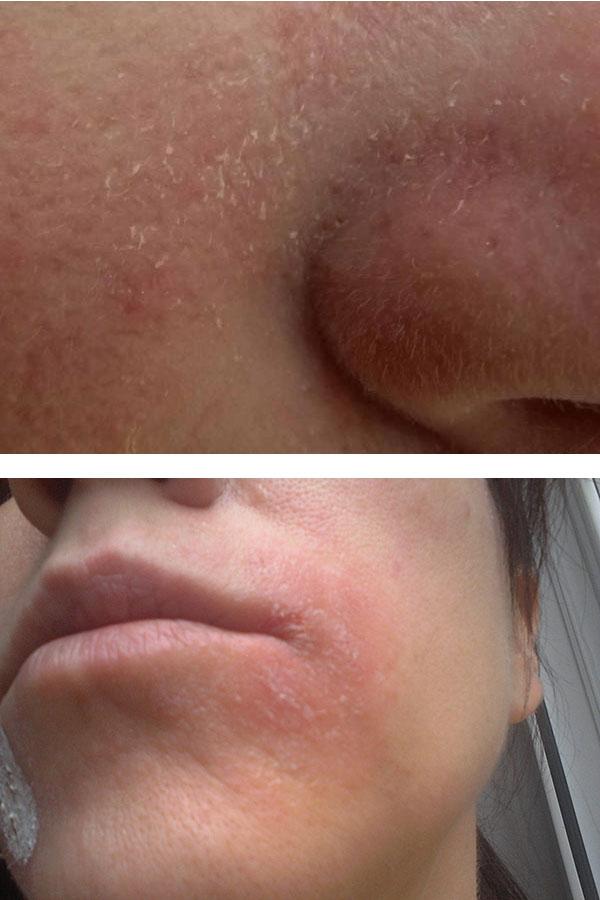
High physical activity, visiting baths and saunas, or staying in a hot climate are the most common reasons why a man's face is covered with red spots localized in the cheeks and lips.
This will be accompanied by sweat, shortness of breath, and a change in body temperature.
However, if after exposure to cool air and a slower pulse the symptom does not go away, the spots appear in any conditions, we can assume:
- hypertension;
- heart diseases;
- eczema.
Among women
Hormonal disruptions, even situational ones (during the menstrual cycle), become a common cause of skin rashes: small pimples, areas of peeling and redness appear on the face, which may disappear after the end of menstruation, or may remain. Mostly such spots do not itch and do not cause any particular discomfort, but if they accompany each cycle or are observed throughout pregnancy (large areas - cheeks, chin), it is worth seeing an endocrinologist.
The child has
Small children (especially infants) do not have strong immunity, so every second young mother worries about allergic rashes and red spots that appear on the child’s face. They can be the body’s reactions to literally anything - among the reasons that contribute to the appearance of redness are:
- change in climatic conditions;
- new products on the menu;
- birth injuries;
- infections;
- allergy to insect bites;
- problems with the functioning of the gastrointestinal tract.
A couple of additional symptoms that accompany irritation on the face in the form of red spots are often a sign of a skin disease. Several problems can be expected:
- psoriasis;
- eczema;
- demodicosis (subcutaneous mite);
- viral type lichen;
- Rosacea.
Less commonly, redness, which is accompanied by peeling, can be attributed to a sun allergy, or, if severe itching is present, to a burn, but here a new symptom will be added - pain when touching the spot. Regarding the manifestations of skin diseases, the type of foci of redness depends on the exact diagnosis:
- In patients with pityriasis rosea, dry plaques of a bright red color with an edging appear, the diameter reaches 4 cm, but this disease affects the face less often than the body.
- With eczema, weeping spots form, which, after opening, dry out, crack, and itching occurs.
After washing
In people with sensitive skin, red spots on the cheeks, chin and nose can form even after contact with tap water, which indicates its poor composition. This point is especially pronounced when changing regions.
Your face may return to normal within a few hours. Separately, experts mention cases when redness occurs in response to cosmetics used when washing – here you need to look for the ingredient that triggered the allergy.
Itchy under the eyes
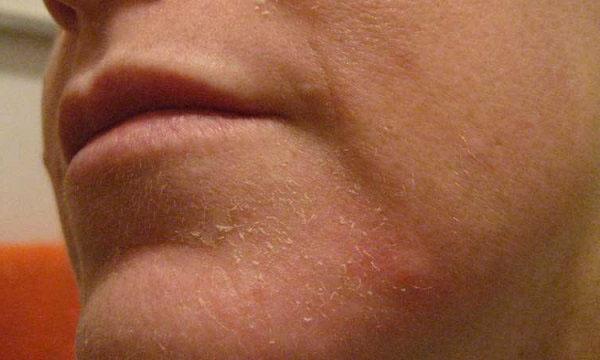
The formation of red spots in the area around the eyes can be explained by several factors: if women use cosmetics with a heavy composition (professional cosmetics for everyday wear), this is a reaction of sensitive skin. In both sexes, the cause may be a malfunction of the kidneys, or severe vitamin deficiency, which will cause a dry spot with a rough texture and mild itching.
Low immunity of the skin, according to experts, can be the cause of such unpleasant phenomena as red spots that form in the chin area and on the wings of the nose in the late afternoon, which are accompanied by peeling.
By morning they can disappear on their own and not bother you until the next evening.
If the situation does not change over several weeks or even months, the doctor may suggest chronic liver and gallbladder disease, or reduced skin immunity.
Diagnostics
If you are tired of dealing with redness and it does not go away for a long time, you should see a dermatologist, who will collect medical history data to make a diagnosis and refer you to:
- to a gastroenterologist, endocrinologist and neurologist;
- for a blood test;
- take allergy tests;
- perform an immunogram;
- scrape the stain (if we are talking about infectious skin diseases).
It is not recommended to carry out treatment until the cause of the redness is determined - even if the chosen methods get rid of unpleasant manifestations, they will only mask the problem, but will not solve it. The action plan should be drawn up together with the doctor, since it depends on the diagnosis:
- For allergies, only oral antihistamines can help get rid of redness.
- If the spots are the result of skin diseases (lichen, psoriasis), topical use of tetracycline and erythromycin is necessary.
- When acne appears and other skin inflammations, antiseptics and hormonal ointments are used.
- Antimycotics help against fungal infections.
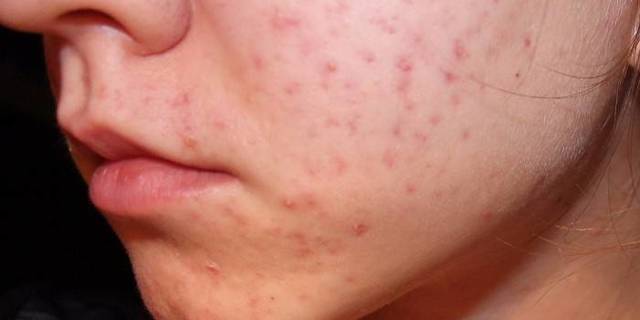
To eliminate red areas caused by skin problems, you can use topical agents in ointment format. If the spots are external manifestations of diseases of the internal organs, such therapy does not make sense. The most effective drugs:
- Tetracycline ointment will help eliminate flaky areas with redness. The drug has a bacteriostatic effect and is an antibiotic, so its effect should be short-term. Not effective against fungi.
- Acyclovir is mainly used on raised spots that are associated with a viral infection. The drug works quickly, so the course of treatment lasts up to 5 days.
- Hydrocortisone ointment is often used on the affected area of skin under the eyes: it is a glucocorticosteroid that relieves inflammation, itching and dryness. Helps with neurodermatitis and other skin diseases.
Causes
The most common cause of peeling in the chin area is improperly selected detergents and cosmetics. This is especially true for dry skin types, which should not be overdried: wash with soap, too hot water, stay in the sun for a long time and use fatty creams.
The second, no less significant reason is seasonal vitamin deficiency. Lack of fruits and vegetables that contain vitamins, lack of sun, slush and cold - all this leads to vitamin deficiency and flaking.
Treatment in this case is simple - take vitamins and eat more fruits and vegetables.
Allergies also cannot be ruled out in case of redness and peeling of certain areas of the body and face. Get tested and eliminate the food to which the reaction occurs from your diet. If you know what you are allergic to, then take a course of medications.
Before you begin to decide what to do if you have excessive dry skin, you should familiarize yourself with the main causes of this phenomenon.
Peeling of the skin on the face can be natural, but can also be the result of certain external conditions and improper care. To understand how best to solve a problem, it is worth understanding its cause.
Among the most common factors of peeling are the following:
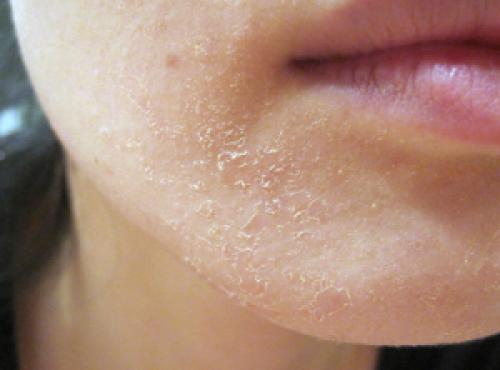
Increased activity of the sebaceous glands, which is very typical for those with oily skin.- Incorrectly chosen cosmetics, especially daily cleansers.
- Lack of adequate nutrition of the skin and hydration of the upper layer of the epidermis.
- Excessive exposure to the sun or solarium without special protective equipment.
- Living in regions with fairly low temperatures and strong winds.
- Treatment of acne with pharmaceutical products.
- Lack of useful vitamins in the body.
- Hardness of central water supply.
- Allergies to cosmetics and certain foods.
- Drinking insufficient water.
- Certain cosmetic procedures – peelings, cleansing and hair removal.
- Chronic long-term runny nose.
- Various skin diseases - psoriasis, eczema, all forms of dermatitis, demodex.
- Diseases and malfunctions of internal organs, as well as the use of complex medications, for example, for the treatment of diabetes.
- Certain hormonal imbalances, in particular menopause in women.
Adjust your diet Healthy foods are responsible for all functions in the human body, including cell regeneration. Properly selected nutrition will make the skin elastic, accelerate the production of collagen and elastin, and saturate the skin with essential minerals and vitamins.
Balance your daily menu so that it includes the right carbohydrates, fats, and proteins. If there is a lack of components, the skin becomes susceptible to even the most harmless factors such as morning washing or dry air.
Pay attention to products containing vitamins A, B, B6, B12, C, D, E. Do not forget about Omega acids, iron, zinc, copper. Eat more chicken eggs (at least 4 per day), lean fish and meat, pork pulp, cereals and legumes.
In the morning, eat dairy products, oatmeal or flaxseed porridge. Focus on low-fat cottage cheese in combination with natural yogurt, add fresh fruit (any kind) to the porridge. Eat 40 grams daily. nuts, prepare first and second courses from lentils, peas or brown rice.
Buy the necessary vitamins in capsules at the pharmacy and take a two-month course. You can also buy fish or badger oil, which is better than multivitamins in moisturizing and nourishing the skin.
Drink at least 3 liters of fluid every day. This amount should not include packaged juices; it is better to exclude them. In addition to water, drink green tea with herbs, citrus fruit juices, and homemade fruit juice without sugar. Prepare cabbage, carrot, cucumber and spinach juice.
Carry out regular skin care The epidermis needs constant hydration, especially in the summer. Buy products from the professional series. Make masks 2 times a week, use gentle peelings. Wipe your face with herbal ice several times a day. It’s very simple to prepare: brew lemon balm and chamomile with boiling water, wait half an hour, pour into molds and put in the freezer.
Skin prone to flaking needs a rich cream. It creates a protective barrier that slows down the removal of moisture. If you only use moisturizers and don’t have fatty ingredients on hand, use Vaseline. Treat the damaged areas locally with a thin layer, leave for half an hour and remove excess with a cotton pad.
Pay attention to pharmaceutical products Today, pharmaceutical companies have developed a lot of drugs that cope with any skin defects. Choose products that contain hydrocortisone. Make sure that the concentration of the active substance does not exceed 0.5%. Read the instructions carefully and, if possible, consult a dermatologist first.
Effective pharmaceutical preparations against flaking of the skin on the face include products based on panthenol. We list the most significant ones that you should choose: “De-Panthenol”, “Panthenol Spray”, “Panthenol” (pure), “Bepanten”, “Pantoderm”, “Elidel”, “La-Cree”. Look at your own capabilities, pricing policies vary greatly.
- Clay. It removes peeling, rashes and irritation well. Clay should be selected based on the characteristics of the dermis: pink for dry skin, white for normal skin, green/black for mature skin, blue for young skin.
- Glycerol. Deep hydration of the epidermis, preventing the appearance of new keratinization.
- Panthenol. A common remedy for treating affected areas, it acts quickly and is available in any pharmacy.
- Aloe. A herbal remedy that has a soothing effect, nourishes and relieves redness.
Main manifestations
Facial peeling is rarely an isolated symptom. It may be accompanied by dry skin with a feeling of tightness. Sometimes peeling is preceded by the appearance of vesicles (small blisters) and pustules (pustules), papules, blisters, subcutaneous nodes, spots and other local dermatological symptoms.
The color of the skin scales may vary. In the absence of dermatological disease, they are white-gray, matte or translucent and form on slightly pinkish skin. But sometimes the areas of peeling have an unusual color. For example, they can be red-pink, purple-bluish, or silver. This depends not only on the nature of the scales themselves, but also on the condition of the skin at their base. Inflammation, congestion, compaction and thickening of the dermis - all this affects the color of pathological lesions.
Often, such scaly spots are clearly separated from the surrounding healthy skin, having clearly visible boundaries or a peripheral rim with fresh elements of the rash. But peeling can also be diffuse. This is most often associated with care errors, hypovitaminosis, metabolic disorders and congenital abnormalities in the processes of keratinization and regeneration.
Peeling with dry facial skin may be accompanied by the appearance of serous crusts in areas of cracking of the epidermis. They are especially often found in the corners of the mouth and at the wings of the nose. And in the case of a secondary bacterial infection, pustules, oozing and rather rough serous-purulent crusts with deep painful cracks can form here.
Periodically increasing constant peeling without signs of active skin inflammation is a reason for an expanded diagnostic search. It may be accompanied by changes in the condition of the skin and nails, signs of damage to internal organs and a deterioration in the neuropsychic state. In this case, it is necessary to look for the cause of the metabolic disorder.
A competent doctor, when treating a patient with complaints of flaking, itching and redness of the skin on the face, is not limited to finding out the specifics of skin care. A general examination is necessary to assess the condition of the internal organs and identify signs of primary diseases. And sometimes the main treatment for the patient is prescribed not by a dermatologist or cosmetologist, but by a therapist, gastroenterologist or endocrinologist.
Methods for treating mycosis of the skin

There are different ways to treat dermatitis:
if there are problems with the gastrointestinal tract, endocrine system, hormonal imbalances, the doctor prescribes appropriate drug therapy; It is mandatory to maintain a proper diet and maintain a healthy lifestyle; It is important to take antihistamines prescribed by your doctor; carefully choose facial care products: all products must be hypoallergenic, contain a minimum of synthetic substances, preservatives, fragrances, lanolin; to increase the level of moisture, use pharmaceutical masks with hydrocortisone, aquaphor, dexpanthenol; It will be effective to carry out salon procedures to moisturize the skin, nourish it and cleanse it.
Traditional remedies
Experts often prescribe the following standard therapy:
shampoos with antifungal and hormonal effects; aerosols, ointments containing certain doses and types of hormones; ointments, shampoos containing zinc; vitamin complexes (particular attention is paid to the presence of retinol, tocopherol); ultraviolet irradiation of the epidermis; removing crusts by applying warm compresses.
Cosmetical tools
Among salon procedures, a special effect is achieved through biorevitalization. This is a procedure during which hydration of the deep layers of the epidermis is achieved. Hyaluronic acid is used for the effect.
After the procedure, the man forgets about peeling for a long time, moreover, the oval of his face is noticeably tightened.
Intensive care programs deserve special attention. They consist of the use of a number of cosmetic products (lotions, oils, creams). Such products are additionally enriched with healing mud and amino acids.
Folk remedies
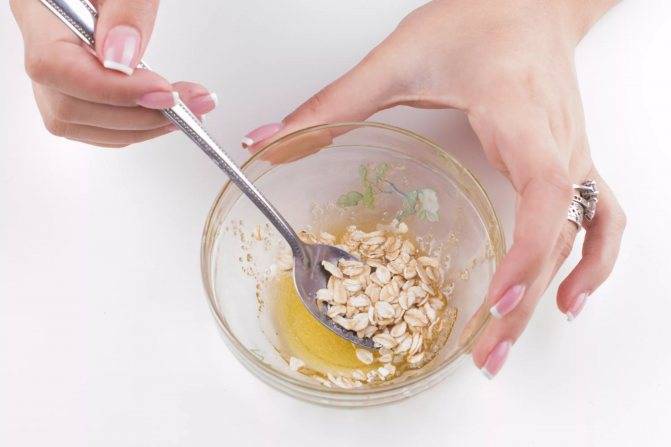
Among folk remedies, a scrub made from oatmeal stands out. It improves the condition of the dermis by carefully removing the keratinized outer layer.
Recipe:
- pour boiling water over 2 tablespoons of flakes;
- leave for 20 minutes;
- beat the egg white inside;
- to stir thoroughly;
- apply with massage movements;
- rinse with warm water after 10 minutes.
Additionally, blackberries work well:
- berries are ground in a mortar;
- apply to the face, making massage movements;
- After 5 minutes, wash off with water.
Honey has a good effect. It is mixed with water, after which the resulting mixture is massaged onto a previously cleansed face.
Prevention
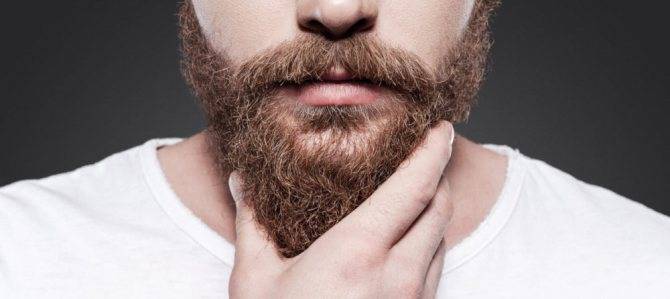
To maintain the health of the epidermis, you need to follow a number of important rules:
- Get enough sleep, rest, and avoid stress.
- Periodically drink vitamin complexes to avoid the development of deficiency.
- Avoid washing your face with soap; it is better to prefer soft formulations with moisturizing ingredients.
- To moisturize and nourish, apply peach and almond oils.
- In winter, protect the cover from frost using special means. They will create a protective film on top, which will prevent moisture from evaporating from its surface.
- Drink enough liquid, moisturize the dermis by spraying it with thermal water from a spray bottle.
- When exposed to the sun, be sure to use creams with a high UV protection factor.
- Shave properly by applying foam to the skin, which you allow for some time to soften the skin. Use only sharp blades.
How to properly get rid of peeling?
Naturally, it is best to contact a professional if the flaking of the skin on the chin and other areas of the skin shows a medical tendency.
And in the case when the problem lies in the wrong approach to skin care, the doctor will refer you to an experienced cosmetologist who will help you choose the right rational solution.
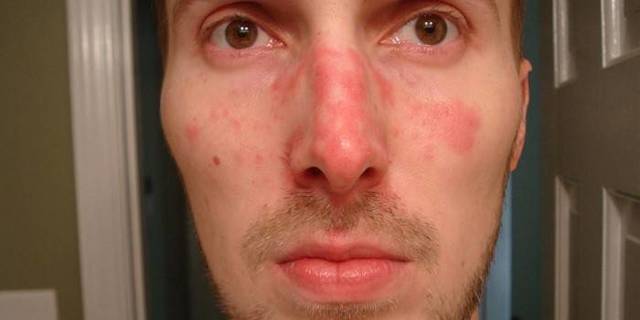
By and large, flaking of the skin is in any case dehydration for a variety of reasons, so if you actively moisturize it, you can visually reduce this manifestation. Any dermatologist in case of desiccation, apart from hormonal treatment, advises to exclude the following:
- soap, since it is better to use foams, gels, milk and other soft cosmetics for washing;
- products that contain alcohol and lanolin, as they promote drying.
Symptoms of chin irritation
In the photo: irritation in the chin area. Such trouble appears on the face suddenly. First, several small red pimples form, then the situation worsens
Such a nuisance as irritation or inflammation on the face appears completely suddenly. At first, nothing portends trouble, because small pimples form in the chin area.
Ladies who are sensitive to their appearance immediately take up a variety of creams and ointments designed to remove any inflammation that has arisen in the shortest possible time. But such remedies do not give the desired effect, the skin becomes more and more reddish in color, itching and burning appear.
Then the picture gets even worse, because acne begins to attack a larger area of the skin, and peeling appears in the facial area. When the rashes heal, dark spots remain. Then the picture repeats itself.
This is how, completely unnoticed, a nuisance that seems quite banal develops into a global irritation on the chin. Moreover, it never goes away on its own.
Irritation on the chin: causes
The main reasons for the appearance of irritation on the chin may be: weakened immunity; disruption of the gastrointestinal tract; problems with the endocrine system; exposure to ultraviolet radiation; excessive use of various cosmetics; change in climatic conditions.
Unfortunately, we all live in a world that is full of various factors that cause certain health problems.
This is especially true for our skin, which is extremely vulnerable to the aggressive effects of the environment.
But not only air pollution causes skin problems.
For example, irritation on the chin can be caused by the following factors: ● weakened immunity; ● disruption of the gastrointestinal tract; ● problems with the endocrine system; ● exposure to ultraviolet radiation; ● excessive use of various cosmetics; ● change in climatic conditions.
As can be seen from this list, there are quite a lot of reasons for the appearance of such a facial disease as skin irritation and they are very different. That is why, at the first unpleasant symptoms, you should consult a doctor, who will determine the factor that became the provocateur in your case.
